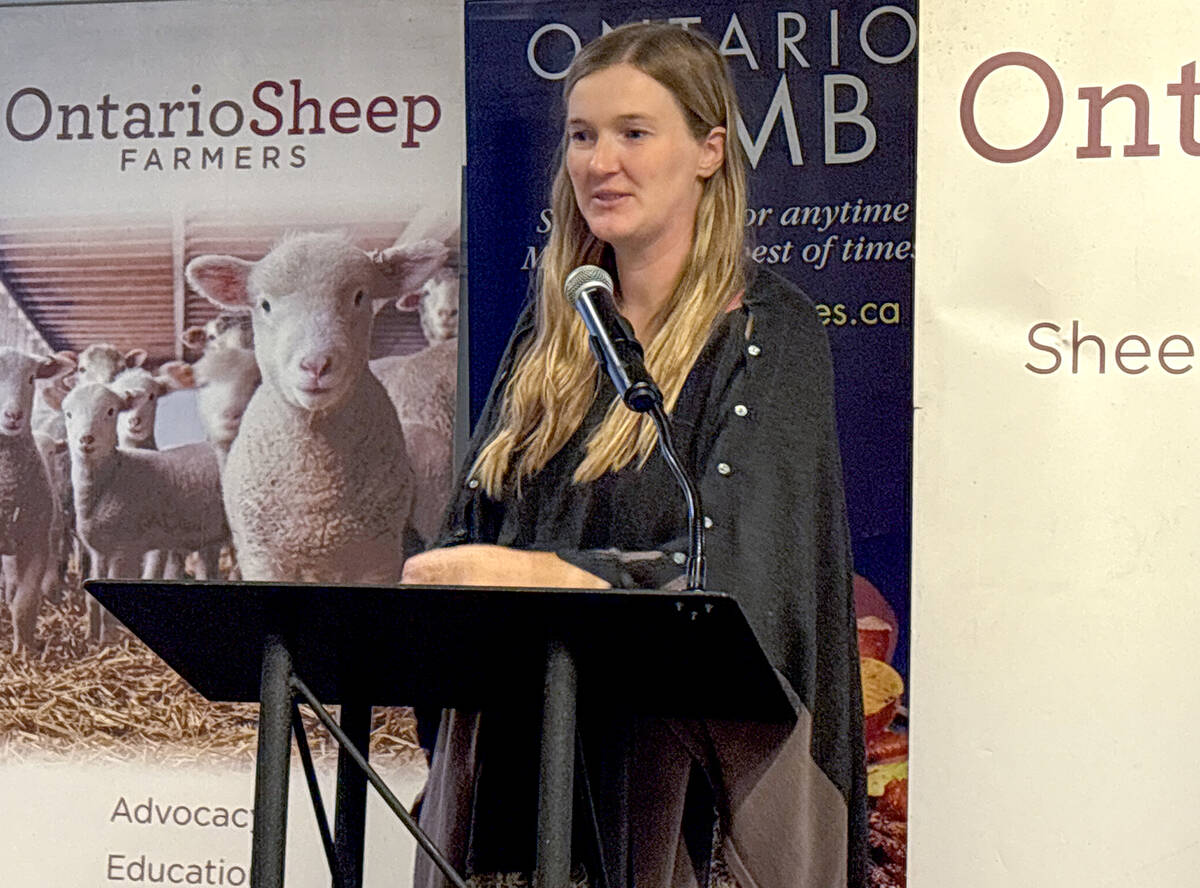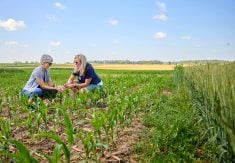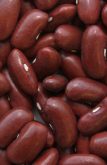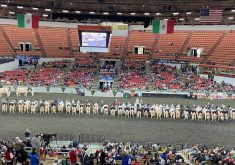Robotic teat washing coming for parlours
Automations continue to arrive in milking parlours. First there was data recording and automatic shutoffs, then teat spray robots.
There have been some attempts at full robotic milking, but adoption has been slow.
The next step in the parlour milking process that begs automation is teat washing.
There have been hand-held roller washers for several years. Now a Wisconsin company is taking its roller washer and putting it on the end of a robot.
The working robot from MTech Dairy Solutions had a lot of people stopping to watch the arm move in and out to clean four teats hanging from a fake udder during the recent World Dairy Expo in Madison, Wisc., washing the equivalent of 7,000 cows each day during the show.
Read Also

Footflats Farm recognized with Ontario Sheep Farmers’ DLF Pasture Award
Gayla Bonham-Carter and Scott Bade, of Footflats Farm, win the Ontario Sheep Farmers’ 2025 DLF Ontario Pasture Award for their pasture management and strategies to maximize production per acre.
When Phil Mlsna, MTech’s international sales manager, patented his hand-held washing unit, he also patented it for automated use.
Mlsna said they were going to wait until they had another year of development before showcasing the unit at the World Dairy Expo, but decided it was working well enough to take to the public.
The unit will now go to Mlsna’s dairy farm to be installed in a special-needs parlour so it can be tested on cows with different types of udders and teat lengths. He expects there will be some cows, like there usually is with robotic milking systems, who don’t make the transition to automated washing.
The robotic unit running the arm may be better than needed, but it had to survive in the unfavourable conditions of a milking parlour. Mlsna found the unit in an international robotics exposition, working under water.
At the price of labour, he doesn’t expect it to be difficult for farmers to find the cash flow for the robot, which will cost in the neighbourhood of $250,000. The automated teat washer will work on rotary and parallel parlours.
Also noted at World Dairy Expo
Expanding genetic index options
Semex carved a significant market in the dairy genetics sector with its Immunity + trait.
The testing process for immunity was developed at the University of Guelph and Semex now uses it to determine which of its bulls’ calves will have higher immunity and hence ability to thrive.
Now the Canadian dairy genetics company has a genomic test that can determine which females are more likely to have low, medium and high immunity.
The Immunity Female genomic test is now available as part of the company’s Elevate genomic testing suite.
Semex’s Jessica Lundgren said at the World Dairy Expo that 16 per cent of the females tested are low for immunity, 16 per cent are high and the rest are in the middle. The test is another data point for dairy farmers who increasingly are making decisions on the potential of their females young in life. They then can know which ones to sell, or breed to a beef bull, or to keep and make part of their future plans.
“You know before they get out of the hutch what you are going to do with them,” she said.
Going old school to measure dairy feed efficiency
One of the elusive traits to measure for dairy cattle is feed efficiency, despite feed being one of the largest costs on a dairy farm.
One of the main reasons it hasn’t been measured is because the testing is expensive and challenging when females weren’t owned by dairy genetics companies.
STGenetics has a new EcoFeed index that it is tying to feed efficiency. In an age where genomic testing is providing most advances, STGenetics is building barns for females so that it can measure feed efficiency.
Rich Coulthard of STGenetics said at the World Dairy Expo that the company has run a feed efficiency trial where it took heifers who were daughters of its bulls and looked at how quickly they gained compared to the feed they consumed.
The next step, he said, before the traits have a higher reliability, is to test the feed efficiency of cows and the company is currently completing a barn for that purpose.
A large international project, with involvement by the University of Guelph, the University of Alberta and the Canadian Dairy Network is collected data in order to try to tie genomic tests to feed efficiency.
Quick dry matter intake testing
Crop dry matter level is one of the most variable factors in dairy rations, but it also has been difficult to measure quickly and easily on the farm.
SCIO aims to change that with its hand-held Near Infrared Spectroscopy (NIR) reader for forages.
Dror Sharon, is chief executive officer and one of the founders of Consumer Physics, a company that uses cellphone camera innovations to bring optical diagnostics to new uses. Its feed analysis product is marketed under the SCIO name.

At the World Dairy Expo, Sharon had a bucket of corn silage and he used the flip-phone-sized reader to take about 10 scans at three seconds each. The data goes to a smartphone and when it flashes green, enough data has been uploaded for a measurement of dry matter.
The hand-held device is small because all of the computer power is in the ‘cloud’. That way any changes to calibrations can be loaded throughout the system.
Previously, herd managers tested dry matter by using a microwave to dry the sample and compare it using weight, with a Koster tester, sending it to a lab, or there are some in-line testers, such as can be placed on forage harvesters and TMR mixers.
Sharon said the system is mostly being made available from nutritionists and dairy supply companies. Cargill and Chr. Hansen are a couple of companies making use of it with their customers.
Dry matter varies on farm based on the state of the crop when ensiled and weather conditions. It forms a basis for the rest of the ration and dry matter intake is an important determinant of milk production.
So far, the system only measures forages such as hay, haylage and corn silage. It doesn’t measure commodities, but Sharon says they will continue to build the system.
The farmer or dairy farm partner would have to buy the unit, but, like most modern cloud-based systems, there’s also a subscription fee that is a continuous cost. It can make sense for larger herds, said Sharon, but smaller herds would have to figure out whether it makes sense for them.
Making milking parlours more efficient
DeLaval had its first showing of a new parallel parlour at World Dairy Expo, designed to get cows off the platform quicker and more efficiently.
The P500 parlour will be available in early 2019, but the company showed the idea behind it at the expo.
Pat Wiltzius, solutions manager with DeLaval, said the parlour makes milking more synchronized.

It all has to do with coordinating the movement of the head gate and the sequence gates. Here’s how it works: When the cows are all in the parlour ready for milking, then the sequence gates rise up, above the cows. That way, the cows get more space during milking and there’s less wear on the sequence gates as they’re not banged about by the cows.
Once milking is finished and the cows are released, the sequence gate comes down and pushes out any lingering cows.
While the parlour will be available at the end of January in Canada and the U.S., it has been running on two test farms and currently is being installed at the first commercial installation, said Wiltzius.
The parallel parlour can be retrofitted into most current parlour footprints.















